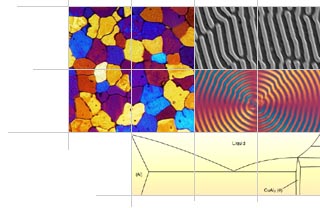Micrograph Library
Browse the libraryAdvanced searchSystemsCompositionsTechniquesKeywordsPhase diagramsHelpPreferencesAbout the micrograph libraryTerms of useContribute micrographs!FeedbackLinksCredits Print this page

Full Record for Micrograph 774

[188 KB]
View micrograph
.. in new window
View micrograph and record
.. in new window
You can also view and download the micrographs on Flickr
- Micrograph no
- 774
- Brief description
- Austenitic stainless steel
- Keywords
- alloy
 , annealing twins
, annealing twins  , austenite
, austenite  , carbon, dislocation
, carbon, dislocation  , grain
, grain  , iron, metal, recrystallisation
, iron, metal, recrystallisation  , stainless steel, steel
, stainless steel, steel 
- Categories
- Metal or alloy
- System
- Fe-C-X

- Composition
- Stainless steel
- Standard codes
- Reaction
- Processing
- The sample was cold-deformed by rolling and then annealed at 704°C for one hour.
- Applications
- Sample preparation
- Technique
- Transmission electron microscopy (TEM)
- Length bar
- 1 μm
- Further information
- This is a transmission electron micrograph taken at 200 kV, from a thin foil sample of "302AA" austenitic stainless steel. The sample was cold-deformed by rolling and then annealed at 704°C for one hour. The image shows a beautiful picture of annealing twins. Notice how the ends of annealing twins are flat, the shape being determined by a minimisation of interfacial energy. Mechanical twins, by contrast, are lenticular (lens like) with sharply pointed ends to minimise the strain energy due to the twinning shear. Annealing twins do not cause any deformation so strain energy minimisation is not an issue. This is also the reason why there is no strain field contrast visible at the tips of the annealing twins.
Source: http://www.msm.cam.ac.uk/phase-trans/abstracts/annealing.twin.html. - Contributor
- Prof H K D H Bhadeshia
- Organisation
- Department of Materials Science and Metallurgy, University of Cambridge
- Date
- 18/07/03
- Licence for re-use
 Attribution-NonCommercial-ShareAlike 4.0 International
Attribution-NonCommercial-ShareAlike 4.0 International- Related micrographs

